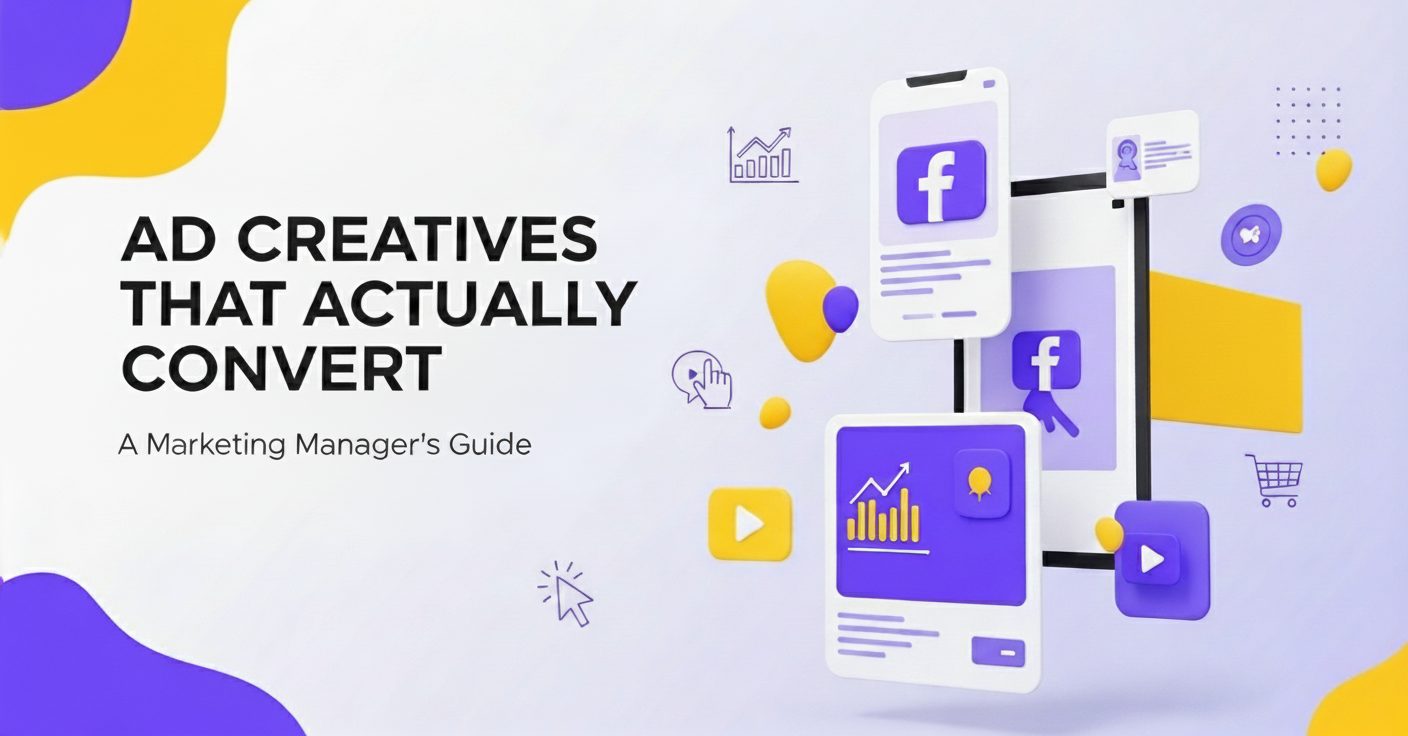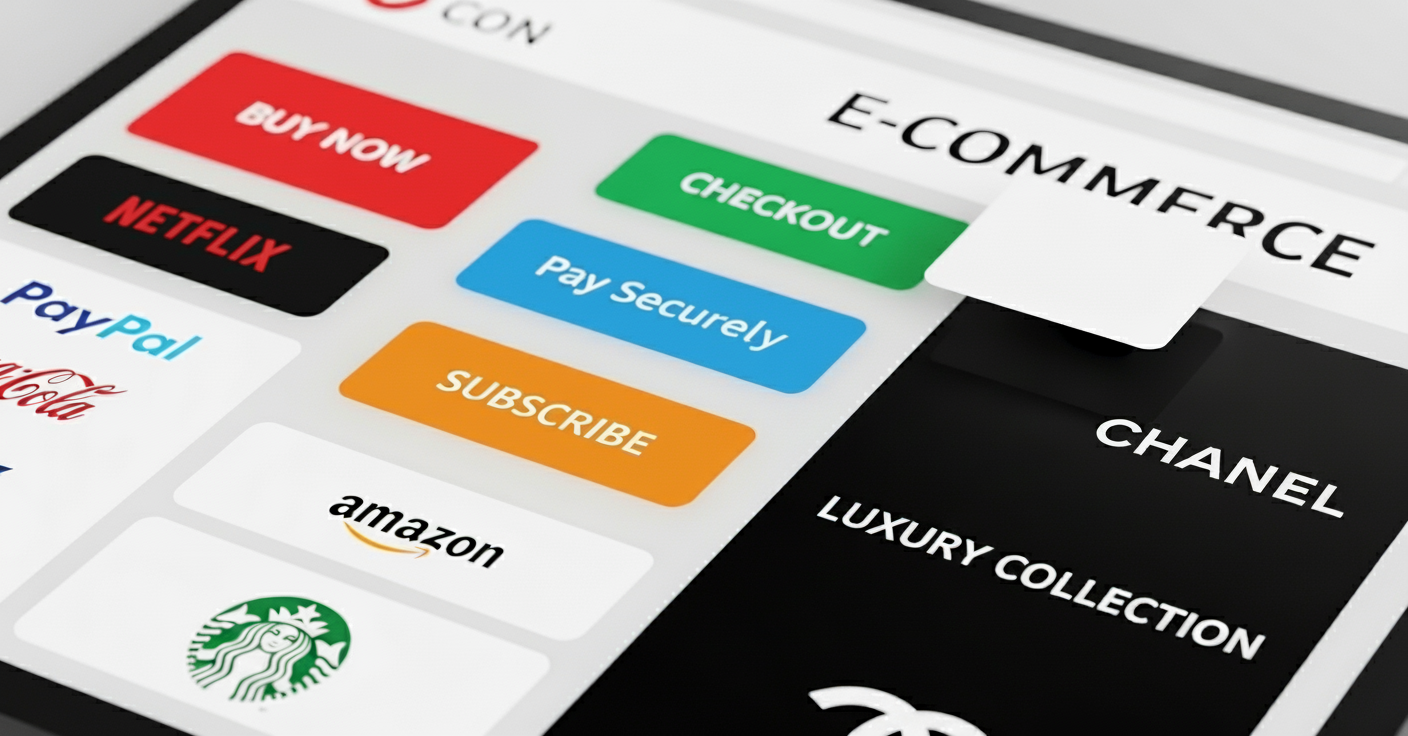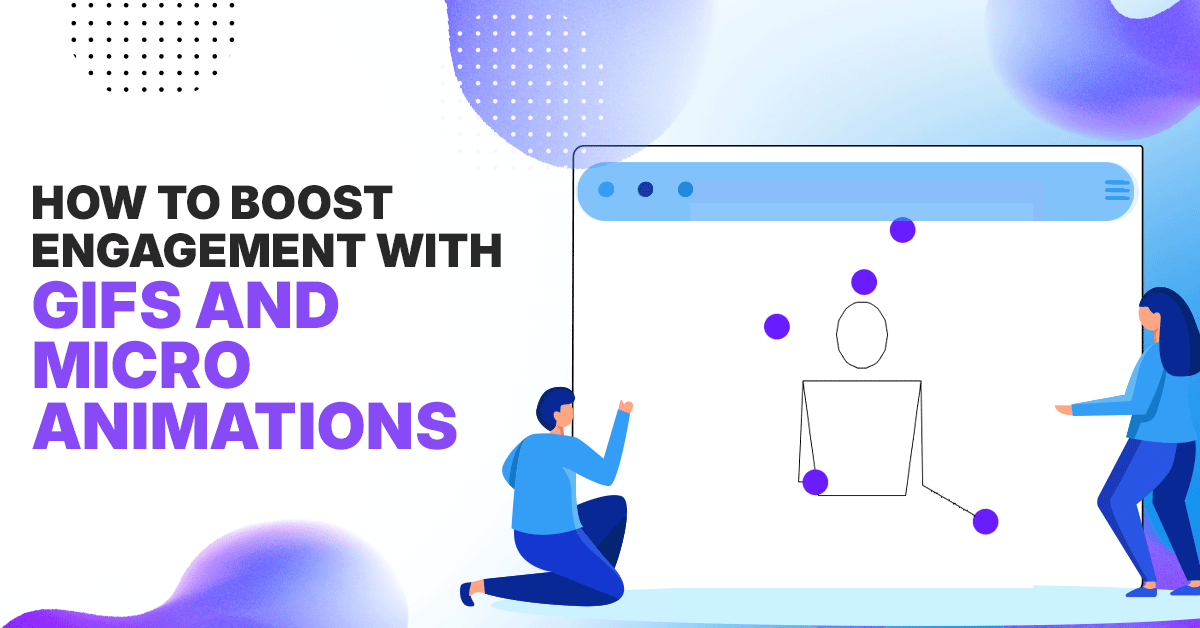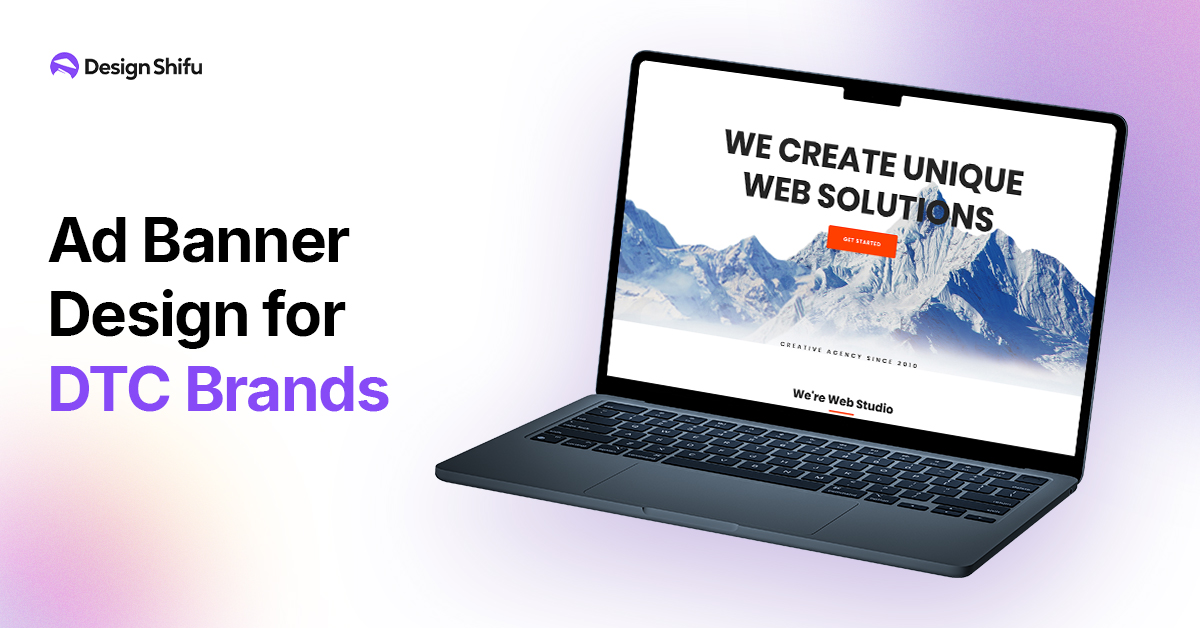You’re probably here because you’re tired of ad creatives that look great but don’t impact your bottom line. What you really need are ad creatives that convert, designs that grab attention and actually drive results. Maybe your CEO just asked why your CPM is skyrocketing while sales aren’t moving, and you know it’s time to rethink your approach.
Looking at average Facebook ad benchmarks only adds to the frustration, you’re paying more but performing worse than the industry standard. That’s exactly why focusing on ad creatives that convert is critical.
I’ve been there too, staring at a Facebook Ads dashboard at 11 PM, wondering why that “perfect” video ad is stuck at a 0.8% CTR. Pretty doesn’t always mean profitable. In fact, many marketers face the same struggle battling high CPMs, low CTRs, and inconsistent performance. If that sounds familiar, check out this guide on the top Facebook advertising challenges for common pitfalls.
Here’s the truth: the best ad creatives that convert aren’t always polished or award-winning. Sometimes the scrappiest, most unexpected ads are the ones that actually drive sales.
TL;DR
- Most ad creatives fail because they look great but don’t drive action, What matters is creating ad creatives that convert, not just impress.
- Marketing managers need to focus less on polished, brand-perfect ads and more on scrappy, authentic, problem-driven creatives that actually make people click.
- Formats like UGC, problem-solution carousels, and “anti-ads” are outperforming glossy content.
- The secret? Test one variable at a time, refresh frequently, and remember conversion matters more than creative awards.
The Reality Check: Why Pretty Ads Fail vs. Ad Creatives That Convert
Can we just acknowledge something for a second? As marketing managers, we’re caught between a rock and a hard place. The C-suite wants “brand-aligned, sophisticated creatives” while the performance data is screaming that the simple, direct-response style ads are crushing it.
I learned this lesson the hard way when I was running campaigns for a B2B software company. We had this beautiful brand video, cinematography that would make Apple jealous, perfectly crafted messaging, the works. Cost us $15K to produce.
It flopped. Hard.
Know what worked? A screen recording of the actual software with me literally just talking over it, explaining how it solved a real problem. Shot on my phone. Edited in an hour. That “amateur” video drove more qualified leads in two weeks than our masterpiece did in two months.
The creative that converts isn’t always the creative that impresses.
What Actually Makes People Stop Scrolling (And Click)
The Pattern Interrupt Your audience is in zombie-scroll mode. They’re mindlessly swiping through their feed when BAM, something breaks the pattern. Maybe it’s a weird headline, an unexpected image, or a video that starts with silence instead of music.
I once tested an ad that started with just text on a black screen: “This might be the most boring ad you see today.” It outperformed our glossy product shots by 340%. Why? Because it was so different from everything else in the feed.
The Problem-Solution Hook Here’s where most marketing managers mess up… we lead with our solution instead of the problem. But here’s the thing, people don’t care about your product until they’re convinced you understand their pain.
Try this: spend 70% of your creative real estate on the problem, 30% on your solution. I know it feels backwards, but trust me on this one.
Social Proof That Feels Real Not the polished testimonial videos with perfect lighting. I’m talking about screenshot reviews, candid customer photos, even negative reviews that you’ve turned around. Authenticity trumps polish every single time.
The Creative Formats That Are Actually Working Right Now
User-Generated Content (But Make It Strategic) UGC isn’t just throwing customer photos into ads anymore. The stuff that’s working is semi-produced UGC, where you give customers loose creative direction but let them film it themselves. See how social-first designs drive engagement
One campaign I ran for an e-commerce client involved sending customers a simple brief: “Show us your before and after, but film it in your bathroom mirror.” Sounds random, right? Those bathroom mirror videos had a 3x higher conversion rate than our studio-shot content.
Why? Because they felt real. Relatable. Like something your friend would send you.
- The “Anti-Ad” Ad These are ads that openly acknowledge they’re ads. “Okay, this is an ad, but hear me out” or “I know you’re probably going to scroll past this, but…”
- It’s like reverse psychology, but it works because it disarms people’s natural ad resistance. Plus, it shows you respect their intelligence.
- Problem-Solution Carousel Ads Start with the problem in the first slide, agitate it in the second, introduce your solution in the third, and show the outcome in the fourth. This format works because it tells a complete story within the natural browsing behavior.
The Tools That’ll Make Your Life Easier (Without Breaking the Bank)
- Canva for Quick Iterations I know, I know “real” marketers use Adobe Creative Suite. But honestly? When you need to test 20 different headlines on the same creative page, Canva’s template system is a lifesaver. Save the fancy stuff for when you know what works. See how Design systems scale without breaking budget.
- Loom for Authentic Video Content Sometimes the best ad creative is just you explaining something clearly. Loom lets you record your screen, your face, or both. No fancy equipment needed. Some of my highest-converting ads were literally just Loom recordings with minimal editing.
- Unsplash + Remove.bg for Quick Graphics Free stock photos plus background removal equals endless creative possibilities. I’ve built entire campaigns using this combo when the creative budget was… let’s say “limited.”
- Figma for Collaboration If you’re working with designers or agencies, Figma keeps everyone on the same page. No more “can you make the logo bigger” email chains.
Testing Strategies to Identify Ad Creatives That Convert
Here’s where most people go wrong with creative testing, they test everything at once. Different images, different headlines, different audiences, different placements. Then they wonder why they can’t figure out what worked.
- The One Variable Rule Test one thing at a time. Same audience, same placement, same budget, just change the creative element you want to test. It’s slower, but you’ll actually learn something. This method is how you identify the true ad creatives that convert instead of guessing.
- The 70/20/10 Budget Split 70% of your budget goes to proven winners, 20% to promising variations, 10% to wild experiments. This keeps your campaigns profitable while giving you room to discover the next big winner.
- The Week-Long Patience Rule I know it’s tempting to kill ads after day one if they’re not performing. But some of the best creatives I’ve ever run had terrible first days. Give them at least a week unless they’re bleeding money.
Mistakes to Avoid if You Want Ad Creatives That Convert
- Making Assumptions About Your Audience You think your B2B audience wants serious, professional content? Maybe. But the playful, slightly irreverent ad might be what breaks through the noise. Test both.
- Forgetting Mobile-First Design If your creative looks great on desktop but terrible on mobile, you’re missing 80% of your audience. Always design for the phone first.
- Overthinking the Call-to-Action “Learn More” often outperforms “Sign Up Now” or “Buy Today.” Sometimes being less pushy gets better results. Counterintuitive but true.
- Not Refreshing Creative Frequency Even your best-performing ads get tired. When you see CTR dropping and frequency climbing, it’s time for fresh creativity. Don’t ride winners into the ground.
Budget-Friendly Creative Production Tips
- Batch Your Content Creation Set aside one day a month for creative production. Film multiple videos, shoot various product angles, create template variations. It’s more efficient than one-off creation.
- Repurpose Relentlessly That blog post can become a carousel ad. That customer testimonial can become a video testimonial and a quote graphic. Squeeze every drop of value from your content.
- Use Your Phone (Seriously) Some of my best-performing ads were shot on an iPhone. Good lighting matters more than expensive equipment. Find a window, shoot during golden hour, and you’re golden.
When to DIY vs. When to Hire Help
DIY When:
- You’re testing new concepts
- Budget is tight
- You need quick turnarounds
- It’s simple static creative
Hire Help When:
- You’ve found a winning concept that needs polish
- You need animation or complex graphics
- Brand consistency is crucial
- You’re scaling successful campaigns
The Tools and Services Worth Investing In
- Design Shifu for Professional Polish When you’ve tested your way to winning concepts but need them executed at a professional level, services like Design Shifu can take your scrappy winners and make them brand-beautiful. unlimited design services for scaling campaigns. They bridge that gap between “this works” and “this looks amazing.”
- Motion Graphics for Video Ads Static images are fine, but video consistently outperforms in most verticals I’ve tested. Even simple motion graphics can boost engagement significantly.
- Professional Copywriting A good copywriter can take your converting concept and make it even better. They see angles you might miss and know the psychological triggers that drive action.
Measuring What Actually Matters
Forget vanity metrics. Here’s what you should actually be tracking:
- Cost Per Result (not just clicks or impressions)
- Creative Fatigue Indicators (rising frequency, declining CTR)
- Quality Score Improvements (lower costs, better reach)
- Creative Lifespan (how long before performance drops)
The Future-Proofing Strategy
Platforms change, algorithms shift, but human psychology stays pretty consistent. Focus on understanding what makes your audience tick rather than chasing the latest platform features.
Build a library of concepts that work, not just individual ads. When you know that “problem-agitation-solution” works for your audience, you can adapt it to any platform or format.
Key Takeaways
- Pretty ads don’t always perform, authentic, problem-focused creatives often convert better.
- The best ad formats in 2025 include UGC, “anti-ads,” and problem-solution carousels.
- Simple tools like Canva, Loom, and Figma can help marketing managers iterate quickly.
- Follow the 70/20/10 rule: invest most of the budget in proven winners, some in variations, and a little in experiments.
- Refresh creatives regularly to avoid fatigue and falling CTR.
- DIY scrappy creatives for testing, then polish winners with professional design services.
Your Next Steps
Start with one campaign, test multiple creative angles, and double down on what works. The best ad creatives that convert aren’t always award-winning, they’re the ones that move the needle.
Want to launch high-performing ads faster? Let Design Shifu handle it with unlimited design requests and quick turnarounds. Get started today.
FAQs
What makes an ad creative actually convert?
Ad creatives convert when they grab attention, connect to the audience’s pain points, and offer a clear solution. Authenticity and simplicity often outperform flashy, brand-perfect designs.
Which ad creative formats work best in 2025?
How should marketing managers test ad creatives?
How often should I refresh my ad creatives?
Should I DIY ad creatives or hire professionals?
What tools can help me create high-performing ad creatives quickly?





